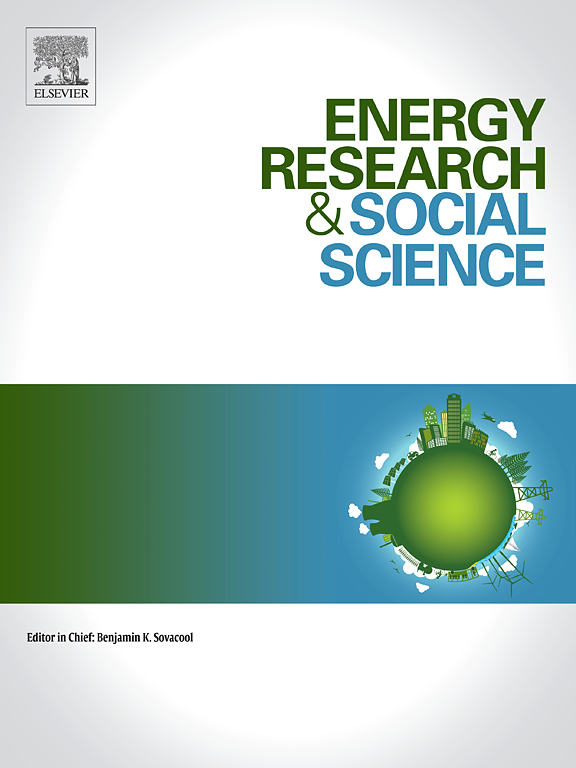From roads to roofs: How urban and rural mobility influence building energy consumption
IF 6.9
2区 经济学
Q1 ENVIRONMENTAL STUDIES
引用次数: 0
Abstract
Understanding the relationship between travel behavior and building energy use at an urban scale is crucial for developing effective energy management strategies. Mobility patterns significantly impact building occupancy, which in turn affects energy consumption. However, existing methods often focus on individual buildings, whereas geographical influences on energy usage are not adequately examined. This study addresses this gap by using transportation origin-destination (OD) data to estimate building occupancy and energy. The proposed method assigns OD trips from census block groups to the building level, incorporating building, travel survey, and census data to derive building occupancy profiles. This method was applied to urban and rural areas with 4062 buildings in 70 census block groups. We found that the OD-informed occupancy profile exhibits smoother energy consumption patterns compared with that of Department of Energy reference occupancy profiles. Our analysis reveals distinct building energy consumption patterns among groups with long and short commutes, emphasizing the effect of commute times and work schedules on residential energy usage. This framework is useful for practitioners in transportation agencies and utility companies, enabling the estimation of building energy based on mobility patterns. Overall, this study shows the potential of integrating transportation and building energy data to inform cross-sector energy management strategies.
从道路到屋顶:城市和农村的流动性如何影响建筑能耗
在城市范围内,了解出行行为与建筑能耗之间的关系对于制定有效的能源管理战略至关重要。交通模式对建筑占用率有重大影响,而建筑占用率又反过来影响能源消耗。然而,现有方法通常只关注单个建筑,而对能源使用的地理影响却没有进行充分研究。本研究利用交通起点-终点(OD)数据来估算建筑物的占用率和能耗,从而弥补了这一不足。所提出的方法将人口普查区组的 OD 行程分配到建筑物层面,结合建筑物、旅行调查和人口普查数据,得出建筑物的占用情况。该方法适用于城市和农村地区的 70 个普查区组的 4062 栋建筑物。我们发现,与能源部参考的占用情况相比,以 OD 为依据的占用情况显示出更平滑的能源消耗模式。我们的分析揭示了通勤时间长和通勤时间短的群体之间截然不同的建筑能耗模式,强调了通勤时间和工作安排对住宅能耗的影响。这一框架对交通机构和公用事业公司的从业人员非常有用,可以根据流动模式估算建筑能耗。总之,这项研究显示了整合交通和建筑能源数据为跨部门能源管理战略提供信息的潜力。
本文章由计算机程序翻译,如有差异,请以英文原文为准。
求助全文
约1分钟内获得全文
求助全文
来源期刊

Energy Research & Social Science
ENVIRONMENTAL STUDIES-
CiteScore
14.00
自引率
16.40%
发文量
441
审稿时长
55 days
期刊介绍:
Energy Research & Social Science (ERSS) is a peer-reviewed international journal that publishes original research and review articles examining the relationship between energy systems and society. ERSS covers a range of topics revolving around the intersection of energy technologies, fuels, and resources on one side and social processes and influences - including communities of energy users, people affected by energy production, social institutions, customs, traditions, behaviors, and policies - on the other. Put another way, ERSS investigates the social system surrounding energy technology and hardware. ERSS is relevant for energy practitioners, researchers interested in the social aspects of energy production or use, and policymakers.
Energy Research & Social Science (ERSS) provides an interdisciplinary forum to discuss how social and technical issues related to energy production and consumption interact. Energy production, distribution, and consumption all have both technical and human components, and the latter involves the human causes and consequences of energy-related activities and processes as well as social structures that shape how people interact with energy systems. Energy analysis, therefore, needs to look beyond the dimensions of technology and economics to include these social and human elements.
 求助内容:
求助内容: 应助结果提醒方式:
应助结果提醒方式:


